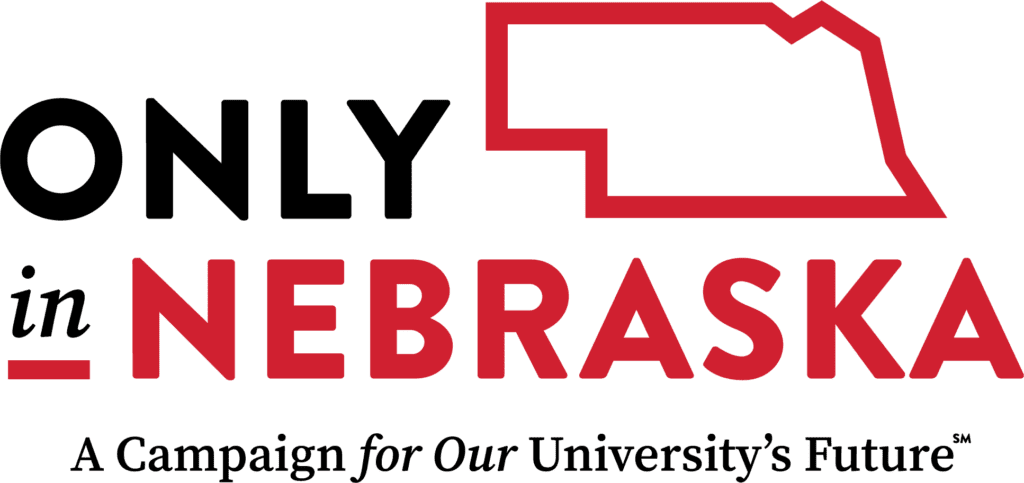Work of world-renowned artist and Holocaust survivor finds a home at UNO

When Samuel Bak was 9 years old, he was living in a Polish ghetto. The town he had grown up in was decimated. Most of his family had been killed. It was 1942, the world was at war, and Bak was living through the terrors of Nazi control.
While Bak, protected by his mother, fled and hid in a daily struggle to survive the Holocaust, he captured his experiences on paper. An exceptional artist even as a child, Bak painted what he witnessed — haunting and profound images of horror and survival.
When the war ended, Bak continued to paint. His work became internationally renowned as an iconography of the Holocaust experience and Jewish history and has been exhibited in museums, galleries and universities around the world. Today, Bak’s insightful collection has found a new home at the University of Nebraska at Omaha.
“While his art traverses dark and difficult subject matter, it is also very much about beauty, joy and hope,” said David Boocker, dean of the UNO College of Arts and Sciences. “His art inspires us all to be hopeful that we can make sense of the complex world we share. He encourages us to work towards a more just, more humane existence.”
Bak’s work is a natural fit at UNO, which is home to three internationally recognized institutions on Holocaust, genocide and Jewish studies: the Sam and Frances Fried Holocaust and Genocide Academy, the Natan and Hannah Schwalb Center for Israel and Jewish Studies and the Leonard and Shirley Goldstein Center for Human Rights.
Through partnerships with these institutions and support from University of Nebraska Foundation trustees Don and Andi Goldstein, Bak came to Omaha in 2019 for an exhibition of his work. “WITNESS: The Art of Samuel Bak” drew more than 4,000 visitors, including more than 1,500 middle and high school students. Bak visited UNO for the exhibit and recognized a kindred passion for Holocaust studies in the faculty. He then made a generous gift to the university of 500 works of art spanning his career.
“What guided me throughout the entire process of choosing the artworks was the thought that they would contribute to the growth and maturation of generations of students and visitors. It gave me a true sense of fulfillment,” Bak said in a video message to supporters. “I chose major artworks, among the most important I ever created, and now I am cautiously handing them over to you … They represent a very precious part of what I am; they are my legacy.”
UNO plans to build a permanent home for Bak’s collection at UNO. The Samuel Bak Museum and Academic Learning Center will be housed in a fully redeveloped Kayser Hall, near the entry of UNO’s Dodge Street campus. Boocker said the museum will make UNO a national destination and hub for Holocaust and genocide studies in the U.S.
“Around the world, human rights are being redefined,” Boocker said. “Having the art of Samuel Bak on campus will allow UNO to be at the forefront of those conversations, both nationally and internationally.”
The timing is crucial. Extremism continues to grow around the world, and in the U.S. historical understanding about the Holocaust is lacking. Studies show nearly one-third of Americans and more than four in 10 millennials vastly underestimate the number of Jews killed during the Holocaust, and fewer than half of Americans know that Adolf Hitler became chancellor of Germany through a democratic political process.
“Recent studies demonstrate the positive outcomes of Holocaust education,” said Mark Celinscak, Ph.D., associate professor of history and executive director of the Fried Holocaust and Genocide Academy. “Students who study the Holocaust are more empathetic, tolerant and engaged. Those who learn about the Holocaust and its impact better recognize the dangers of discrimination and the importance of being an upstander, as well as the need to work against intolerant behavior in others.”
The museum will also fill a need in Nebraska, which is ranked in the bottom third in the nation in number of museums.
“There is an opportunity for the Samuel Bak Museum and Academic Learning Center to become a cultural and intellectual focal point not only for UNO, but for the city of Omaha, the state of Nebraska, and the entire Midwest region,” Boocker said. “It will offer students and community members access to world-class art and the opportunity to participate in conversations about many of the challenging issues that Mr. Bak’s art asks his viewers to confront.”
When Bak visited campus in 2019, he discussed his work and shared his experiences with students, who were deeply impacted. Boocker said Bak’s work resonates so strongly with students, faculty and the community because it speaks about brokenness and loss that many people can relate to.
“Samuel Bak is many things. He is an artist. He is a painter. He is a philosopher who paints. He is a painter of questions. And above all, Samuel Bak is an educator,” Celinscak said. Having the work of such an insightful, prolific, world-renowned artist on our campus will enrich the lives of everyone who will encounter it.”




